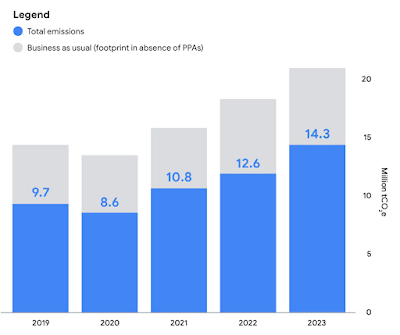The left-leaning media in the Western world has long used Hitler as the model for a fascist dictator, however, in recent years we've seen Donald Trump repeatedly compared to Adolf Hitler as a means to drive voters away from Trump's agenda. In this posting, we'll look at one example and how the owner of the media company that published the opinion piece is obviously irony impaired.
On December 20, 2023, this missive appeared in the Washington Post:
The author of the opinion piece is Mike Godwin, an American attorney and author and formulator of Godwin's law aka Godwin's rule of Hitler analogies which is expressed as follows:
"As an online discussion grows longer, the probability of a comparison involving Hitler approaches 1." (i.e. a 100 percent certainty)."
Godwin's law implies that the level of discourse regarding a subject has devolved to the degree that further discussion is absolutely pointless with the person who mentions Hitler being the loser in any argument.
Despite his creation of Godwin's law, he makes the following remarks in his Washington Post opinion piece:
"But when people draw parallels between Donald Trump’s 2024 candidacy and Hitler’s progression from fringe figure to Great Dictator, we aren’t joking. Those of us who hope to preserve our democratic institutions need to underscore the resemblance before we enter the twilight of American democracy.
And that’s why Godwin’s Law isn’t violated — or confirmed — by the Biden reelection campaign’s criticism of Trump’s increasingly unsubtle messaging. We had the luxury of deriving humor from Hitler and Nazi comparisons when doing so was almost always hyperbole. It’s not a luxury we can afford anymore."
He also notes that not only is Trump's authoritarian bent an issue, so is his use of certain dog-whistle words like "vermin" which Trump has used to describe those who oppose him and that the current influx of undocumented immigrants which he claims are "poisoning the blood of our country" which Godwin claims parallels Hitler's rhetoric about the "untermenschen" which included Jews, gays and gypsies not to mention the Slavic people as a whole.
His opinion piece closes with this:
"Will Trump succeed in being crowned “dictator for a day”? I hope not. But I choose to take Trump’s increasingly heedless transgressiveness — and, yes, I really do think he knows what he’s doing — as a positive development in one sense: More and more of us can see in his cynical rhetoric precisely the kind of dictator he aims to be."
So basically, Mike Godwin has fallen into a trap of his own making, hoisting himself on his own petard.
Now, you may say that the Washington Post merely published Mr. Godwin's opinion piece in the interest of maintaining political balance and that the intent was not that the piece was to be a dog whistle for the left/Democrats. I would suggest that you may want to rethink that idea this quote from this Washington Post article in 2013 which was published when Jeff Bezos took over the WaPo:
Given his leaning to the left of the political spectrum, I would propose that it is highly unlikely that the Washington Post would have published Mr. Godwin's opinion piece comparing Donald Trump to Adolf Hitler if it did not pass Jeff Bezos' approval.
Now, let's close with this tweet that Jeff Bezos posted about "Hitler" after there was an attempt on Donald Trump's life on July 13, 2024:
So, apparently it's okay for the rulers to be thankful that "Hitler" is safe after his brush with death.
The irony impairment evident among some of the ruling class is, to put it mildly, stunning. Apparently, running "assassination porn" against Donald Trump is okay until someone swallows the KoolAid and decides to take matters into their own hands, perhaps staining the political left and its pathological hatred of the "far right".














